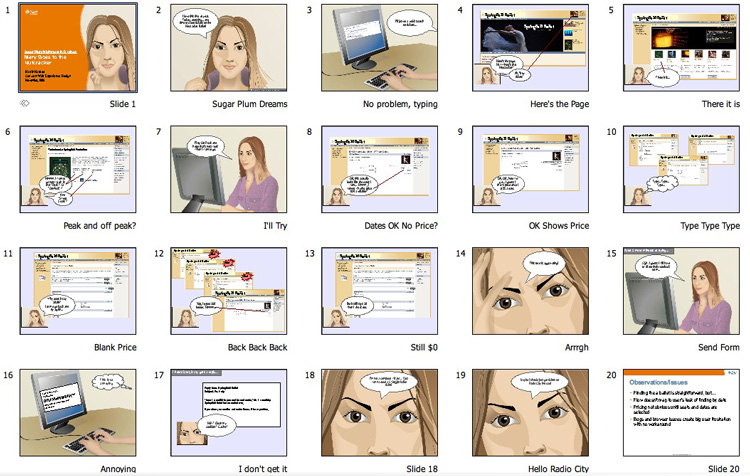
Design Comics / Examples Above is a thumbnail version of a design comic storyboard, Sugar Plum Nightmare in D Minor: Mary Goes to the Nutcracker. Here's an Acrobat PDF version of the same comic storyboard so you can read it up close. This particular story shows the main character excited and hopeful about buying ballet tickets, then getting frustrated by the online buying process, and then disappointed, and finally deteremined to solve her problem by spending her money on a different entertainment option. Usually -- for either a negative story like this one, or a positive story -- we'll add recommendations at the end of the story in bulleted form about how to improve the experience. Here is a seven-minute video we put together at Cisco to explain the quick and easy process:
What Makes a Good Design Comic?Comics are visual storytelling. They have all of the advantages of storyboarding, with the big plus that you can add a human element that weaves a story together. Here are some things to think about in crafting your story:
Credits: These templates were developed by Martin Hardee with inspiration from Casey Cameron, Kevin Cheng, and the web design teams at Sun Microsystems, Cisco and other companies. Illustrations, by ISD Group, are free for you to use. Please add a credit line at the end of your slides or storyboards (see the slides for an example). Site created by Martin Hardee |